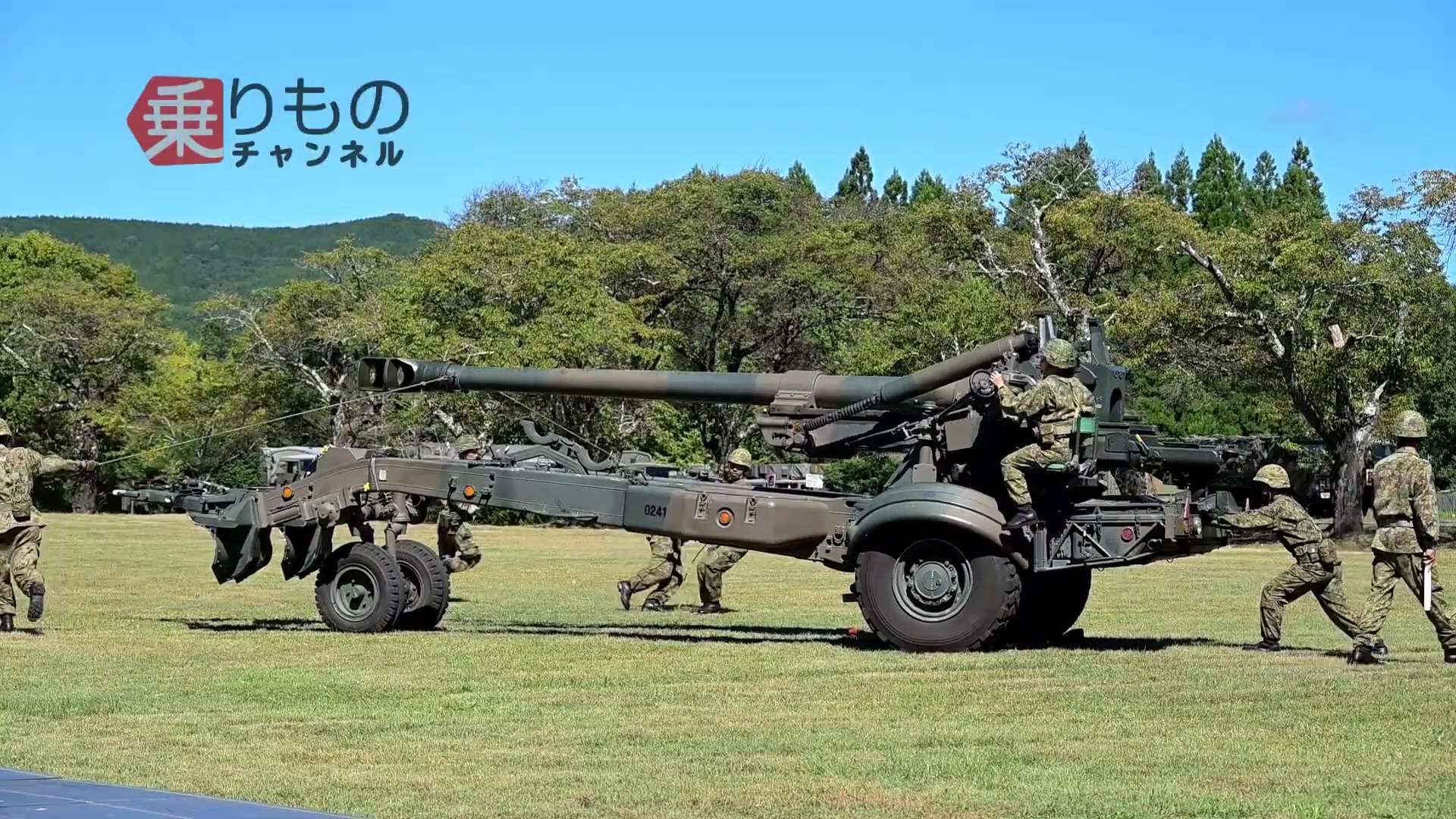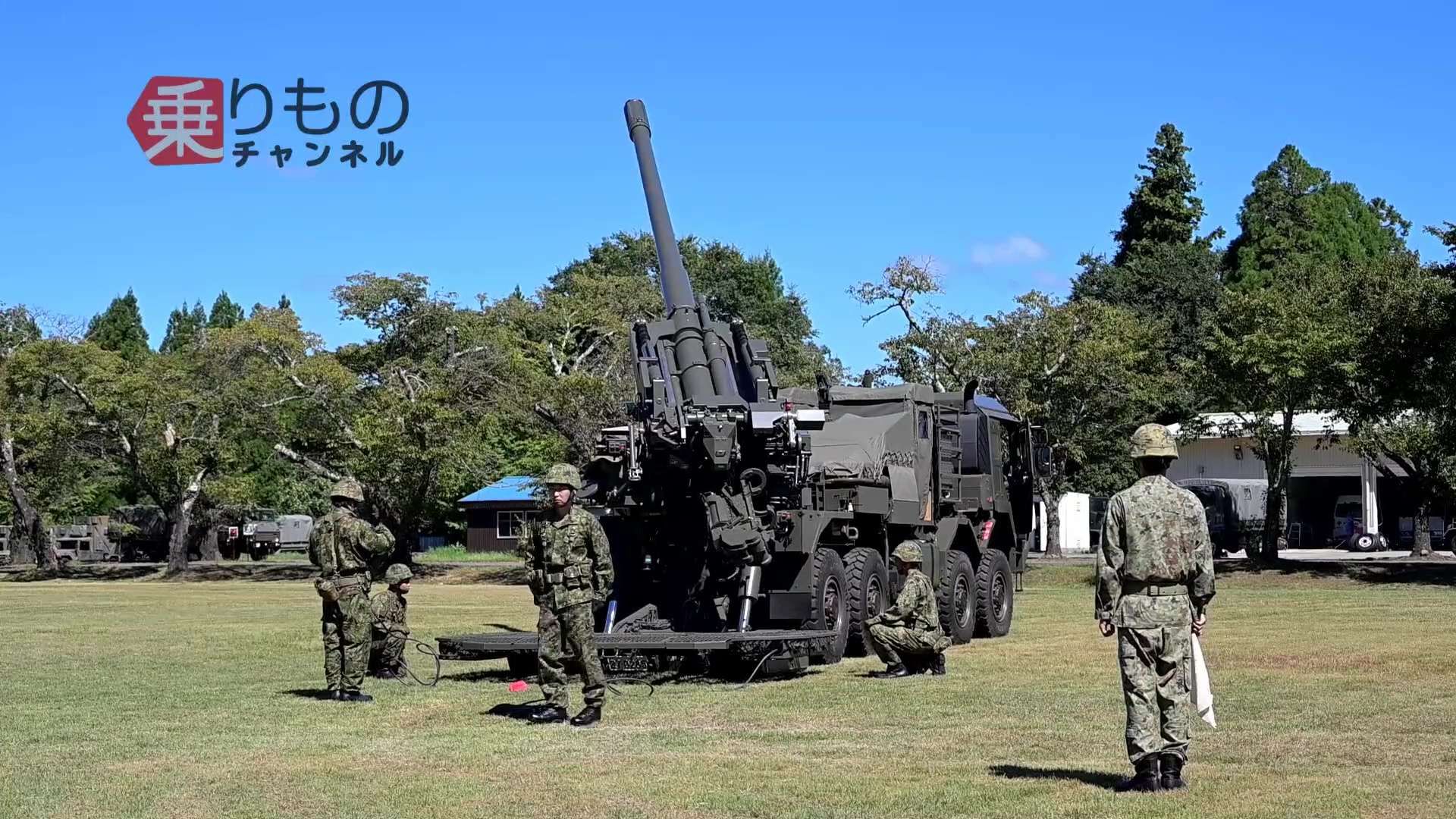Breaking News
Japan's 2nd Artillery Brigade receives new Type 19 Howitzer with 40-kilometer range capability.
As reported by NAMELESS_JSDF on October 14, 2024, the 2nd Artillery Brigade of the Japan Ground Self-Defense Force (JGSDF) recently received a new Type 19 155mm wheeled self-propelled howitzer, complementing the older FH-70 155mm towed howitzers previously used by the 2nd Artillery Battalion in Kusu, Ōita Prefecture. The Type 19 can fire up to 40 kilometers using base bleed shells at approximately six rounds per minute, with modern targeting and fire control systems enhancing accuracy and responsiveness.
Follow Army Recognition on Google News at this link

In 2023, 16 additional units were ordered for approximately $100 million, with an estimated request for 14 more units in fiscal year 2025, bringing the planned total to 58 Type 19s, costing approximately $317.6 million. (Picture source: Youtube/乗りものチャンネル)
The Japanese Ministry of Defense initiated the Type 19's development in 2013 to address the need for a modern, mobile artillery system and overcome the limitations of the FH-70, in service since 1978. Japan Steel Works (JSW) led the project, leveraging existing technologies to reduce costs. The Type 19 combines the Type 99 self-propelled 155mm howitzer's gun system with a wheeled chassis, with development costs amounting to around 9.9 billion yen (approximately $66.3 million).
Initial planning began in 2011, with development approved in the fiscal year 2013 defense budget. Japan Steel Works delivered a prototype to the Acquisition, Technology & Logistics Agency (ATLA) on May 31, 2018, which was publicly unveiled at the Fuji Firepower Exercise in August 2019 after evaluation testing.
In fiscal year 2019, seven units were procured for training purposes at a cost of 5.1 billion yen (approximately $34.2 million), including an initial fee of 1.7 billion yen (about $11.4 million). Another seven units were acquired in 2020 for 4.5 billion yen (approximately $30.2 million), with the same budget allocated for seven units each in 2021 and 2022. However, no purchases were made in fiscal year 2023.

The Japanese Ministry of Defense initiated the Type 19's development in 2013 to address the need for a modern, mobile artillery system and overcome the limitations of the FH-70, in service since 1978. (Picture source: Youtube/乗りものチャンネル)
Finally, in fiscal year 2024, 16 additional units were ordered for approximately 14.9 billion yen (around $100 million), with an estimated request for 14 more units in fiscal year 2025 at 14 billion yen (approximately $93.8 million). This brings the planned total to 58 units, costing approximately 47.4 billion yen (about $317.6 million), including the initial fee.
The Type 19 is based on the German HX 7 8x8 truck chassis from Rheinmetall MAN Military Vehicles (RMMV), produced under license by Japan Steel Works, and is powered by a MAN DF2066 LF34 10.5-liter turbocharged diesel engine delivering 440 horsepower. Paired with a ZF 12-speed automatic transmission, the vehicle can reach speeds up to 88 km/h with a range of approximately 800 km. A hydraulically lowered flat, trapezoidal spade at the rear lifts the rear wheels off the ground during firing to stabilize the platform, enabling "shoot and scoot" tactics without the need for extensive setup.

Armed with a 155mm/L52 gun, derived from the Type 99 tracked self-propelled howitzer, the Type 19 could fire Type 93 base bleed ammunition at a maximum range reaches approximately 40 km. (Picture source: Youtube/乗りものチャンネル)
Armed with a 155mm/L52 gun, derived from the Type 99 tracked self-propelled howitzer, the Type 19 features a multi-slotted muzzle brake for recoil reduction and omits the smoke evacuator due to the open compartment design. The semi-automatic loading system automates shell loading, while propellants are manually loaded, allowing the Type 19 to fire standard High Explosive Fragmentation (HE-FRAG) shells up to 30 km, with an extended range of around 38 km using rocket-assisted projectiles. With Type 93 base bleed ammunition, the maximum range reaches approximately 40 km, at a maximum firing rate of around six rounds per minute.
Carrying a five-person crew, the Type 19 measures about 11.21 meters in length, 2.5 meters in width, and 3.4 meters in height, with a weight under 25 tons. The armored cab, positioned at the front, provides protection against small arms fire and shell splinters for three crew members. Two additional crew members sit mid-chassis under a basic canvas cover, offering limited shelter but no additional armor.
Compared internationally, the Type 19 lacks a fully automatic loader but aligns with Japan's priorities by balancing mobility, firepower, and cost-effectiveness. Emphasizing "shoot and scoot" tactics, the Type 19 quickly transitions between firing and movement, minimizing counter-battery exposure. Additionally, the Type 19's targeting systems include an inertial navigation system (INS) integrated with the Firepower Combat Command and Control System (FCCS), allowing precise self-location and eliminating the need for traditional surveying equipment.

The Type 19 combines the Japanese Type 99 self-propelled 155mm howitzer's gun system with a German RMMV HX 7 8x8 chassis, with development costs amounting to around 9.9 billion yen, approximately $66.3 million. (Picture source: Japanese MoD)


























